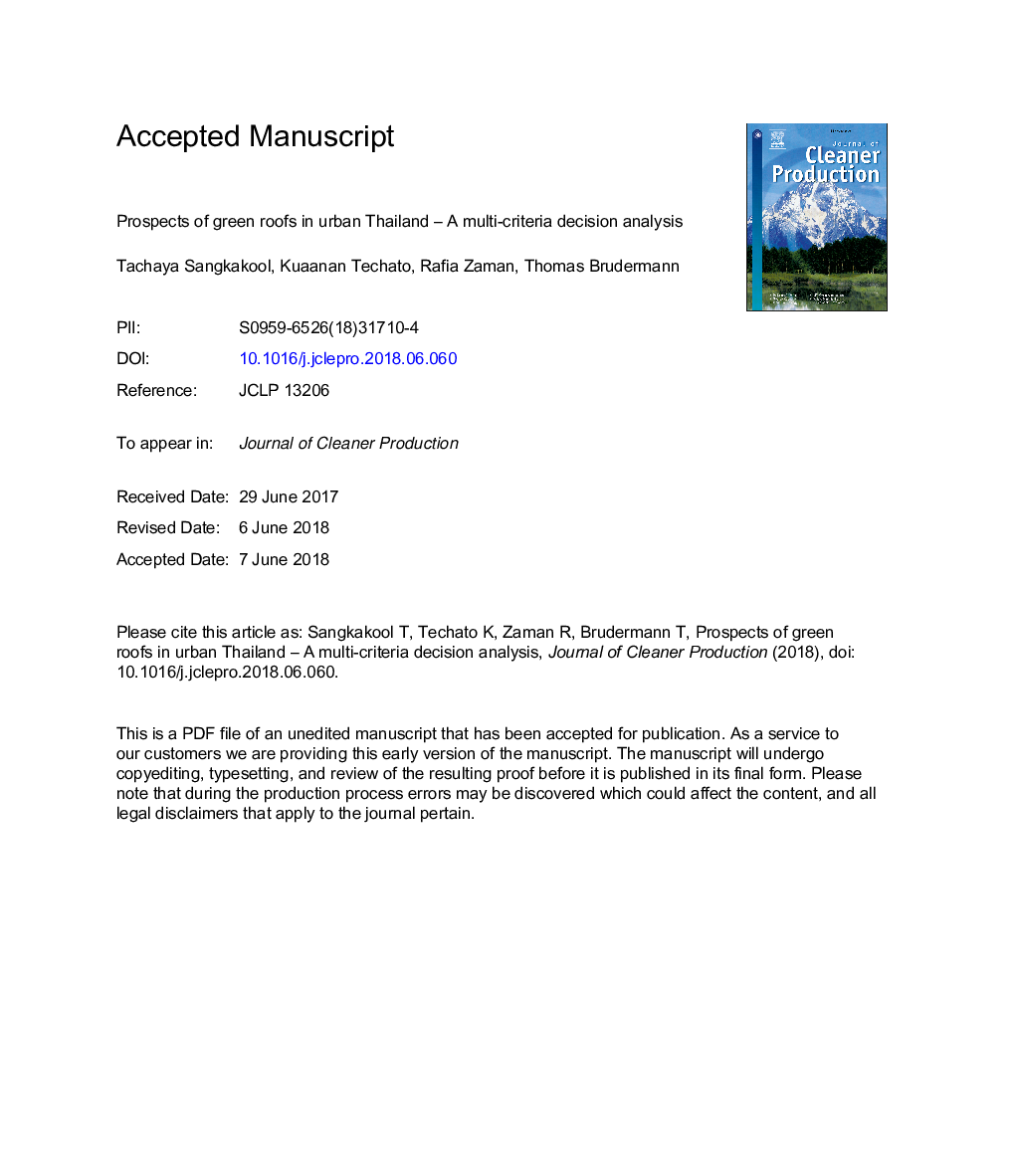| Article ID | Journal | Published Year | Pages | File Type |
|---|---|---|---|---|
| 8093815 | Journal of Cleaner Production | 2018 | 30 Pages |
Abstract
Green roof systems are considered a best practice for climate change adaptation and mitigation in urban areas affected by heat waves and stormwater flooding. Green roofs mitigate urban heat islands, improve urban air quality, buffer stormwater and improve runoff quality, absorb emissions and increase the thermal efficiency of buildings. Green roofs therefore are an interesting technology for densely populated urban areas in Thailand, but still at a rather low diffusion stage. The aim of this paper thus is to identify and quantify the main factors that influence green roof adoption using a mixed-method research design. The relevant factors were (1) identified in a qualitative content analysis, (2) structured alongside two dimensions (internal/external and positive/negative factors), and (3) quantitatively assessed in an Analytical Hierarchy Process based on expert judgments. The analysis yields three main factors influencing the diffusion potential of green roofs in Thailand: While their potential to mitigate urban heat islands is the most important facilitating factor, the lack of proper subsidy schemes as well as the lack of knowledge and skilled workforce, represent major adoption barriers. In spite of the discussed challenges and issues, a light trend towards greener buildings can already be observed among planners, architects, and also on policy levels in Thailand. If the identified issues are addressed properly, green roofs eventually could become a significant contributor to climate change mitigation and adaptation efforts in Thailand.
Keywords
Related Topics
Physical Sciences and Engineering
Energy
Renewable Energy, Sustainability and the Environment
Authors
Tachaya Sangkakool, Kuaanan Techato, Rafia Zaman, Thomas Brudermann,
